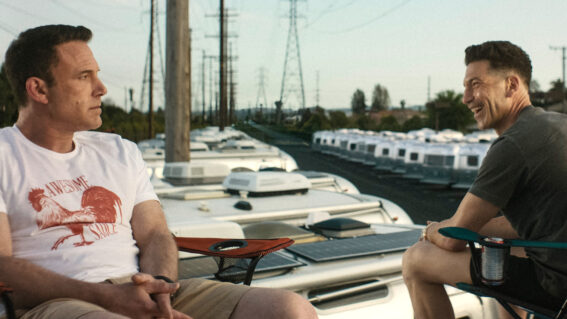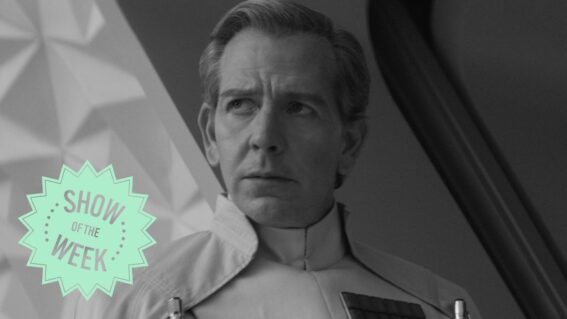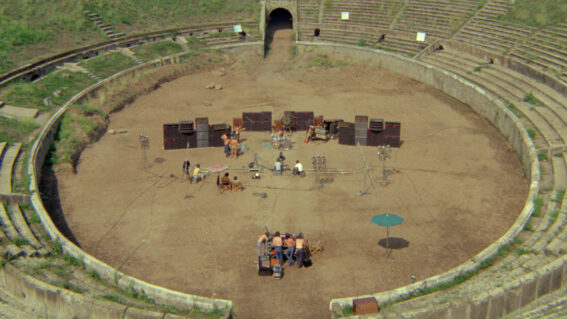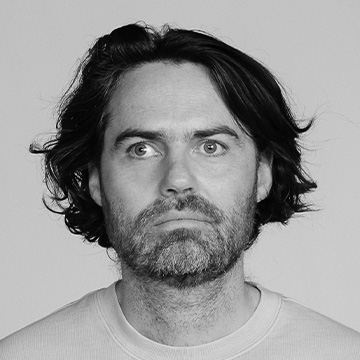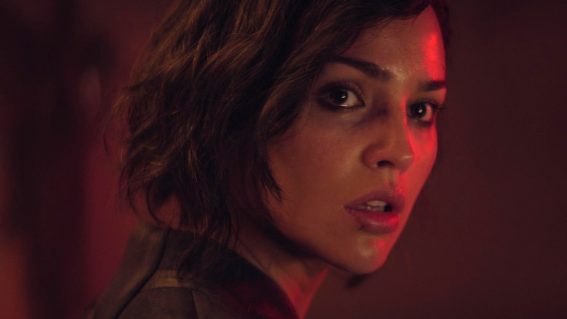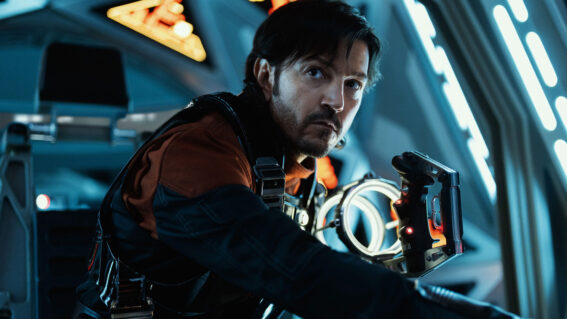The Ian Mune Filmmaking Interview
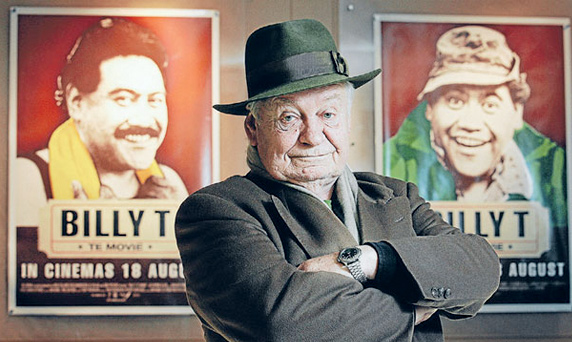
Flicks spoke to veteran Kiwi actor-director Ian Mune (Came A Hot Friday, The End of the Golden Weather) about the nuts and bolts of filmmaking. His latest film, Billy T: Te Movie, is now playing in cinemas nationwide, so he was well-primed to speak freely about what he loves. From scriptwriting, to editing, to working with actors, Mune reveals the tricks of the trade…
Learning Filmmaking
I learnt directing by doing it, basically, but I had been an actor for five, six, seven years before I ever got behind a camera. Then I hitched up with a guy called Roger Donaldson [The World’s Fastest Indian, Species, Smash Palace] – he was making documentaries and commercials, I was in theatre – we got together and pooled our experience. So I learnt a lot off Roger, hopefully he learned something off me, that was the intention.
[You should] listen to the people you’re working with. Respect their judgement and certainly, if they are experienced, respect their experience.
The biggest mistake a new director should avoid? Giving too many orders. Being too prescriptive because they’re terrified they might get it wrong. They nail it to the floor and the damned thing can’t move.
I would encourage film students to always smile and block your ears when talking to bureaucrats, because they are the most dangerous anti-film creatures that I’ve ever come across.
Apart from that, “to thine own self be true, and it must follow, as the night the day, thou canst not then be false to any man” – Polonius to Laertes. And that you can nail to the mast, in your life or in any creative venture you launch into. Those two things may be in conflict – “to thine own self be true” and “don’t go in there and nail it to the floor”. Listen to other people, listen to experience and so on, but that’s the balance, I think, you have to find.
On Process
[To start with] my idea is that there’s the movie, and so far it’s only on paper, but if you read the paper, and you read the white bits between the black bits, you find out what are the ideas in the film – what are the feelings, what is it about, what is happening – and the director’s job is to be able to point everybody else in the right direction to be able to uncover the story that is in the middle of the thing out there.
If the making of a movie is not a journey of discovery, I suspect it will be a dog. If you know the whole damn thing before you start, why make it? And the likelihood is that you’ll strangle it.
It’s like the director being called a ‘filmmaker’. This is a very inappropriate term; a director actually cannot put on a lens or pull focus on the camera, or edit, and he doesn’t need to be able to do any of those things because you’ve got a whole pile of experts working with you. If you say “I know exactly what’s gonna happen right through this movie – do what I tell ya, and it’ll all be fine, here’s the story boards”, you are limiting all of those people to the size of your own vision, whereas if you say “this is the idea, you’ve all read the script, that’s the direction we’re heading in”, they will add stuff that you could never of dreamed of, and then you start making discoveries.
On Making Films for the Audience
I make films for the audience. I started as an actor and if you get up and act for yourself the audience goes home, so you act for the audience and you make films for them. You don’t tell stories in the mirror. You tell them to an audience and you look for their reaction. If you’re not getting a laugh, you know you’ve gotta change your angle a bit.
The Billy T Movie is made specifically for a New Zealand audience, which means we don’t have to explain it, because people all know the language. If we were going to show the Billy T Movie in America, we would have to be explaining all sorts of stuff.
I know when we took Came a Hot Friday over to the States, MGM were very keen to do another one. We were thrilled and it was all going really well, and they said “Oh, just one thing though, let’s get rid of the Mexican”, and I said “He’s not a Mexican, he’s a Maori”, and they said “Well, why has he got that Mexican accent?”, and I said “Cos he wants to be a Mexican”. They just didn’t get it. They didn’t think he was funny, so the movie never got made. I wasn’t gonna make a Came a Hot Friday sequel without The Tainuia Kid.
Artistic vs Economic Decisions
If a decision has to be made for economic reasons, the producer will probably have told me beforehand that we’re running out of money, or that we can’t afford the helicopter. So it’s a little bit like saying we can’t shoot this scene today because it’s raining – it’s just a fact of life. So you make decisions around it and you work within your budget to the best of your ability.
So, rather than be driven or bossed around by the budget, you have to come up with creative decisions that are achievable. But I’m not having a fucking budget telling me what to do.
On Working with the Writer
Horses for courses, each situation is different. I like to work with the writer – sometimes I write with the writer, sometimes I am the writer, and at other times I take the script and get to work as it is, and don’t argue about it.
There is a danger in writing your own material and that is that you may not be able to see where it’s not working. However, a lot of directors do get involved, certainly in the story telling, and then often enough the actors will get involved in dialogue and they’ll want changes, and the director’s gotta be able to work his way through all of that.
This idea that there is an author to a film makes no sense – I just don’t get it. To be the author of the film, what do you do with the DOP [director of photography]? What about the actors? Everybody has got a piece of authoring the film, and for one person to claim that they have authored the film, is preposterous.
On Set
If you’ve been doing your homework, you’ll have reccied the locations with your DOP and the designer and the locations people and the producer who’ll be talking about budget. So you’ve been there.
I tend to walk into the room and go “well, I’m gonna put them over there, we’ll be about here and we’ll move around over here”, and at which point the DOP will probably go “Yeah, that’s what we talked about” and we’ll already be setting it up, and the DOP will make suggestions or I’ll actually just let him get on with it.
The DOP knows what we’re trying to achieve, we’ve talked about the shot, so I just concentrate on the actors and every now and then go and see what the DOP’s doing. Usually he or she’ll be doing the right thing, usually they will enhance the shot – make it better, better than I could make it because I’m not a cameraman – and then it sort of falls in to place fairly logically from what your master shot is. Your master will dictate really, you know, which side of the line you’re on and how tight you wanna get and that sort of thing.
I come from an acting background. For me it starts with the script, the performance, the shot. For other people it starts with the shot, the script, and the performance comes last, that’s the way they think.
Covering a Scene
[‘Covering’ refers to amount of film used to shoot a scene. Someone who covers a lot will obtain more shots and be left with more options in the editing, conversely someone who doesn’t is strict with what they capture on set]
There’s two things about coverage – one is if you don’t cover your arse you’re a fool, and the second is if you shoot too much coverage it’s probably because you never had the right master, and be careful because the producer may sneak in at night and use some of your coverage and you suddenly find there are two movies getting cut – this kind of thing does happen.
You have to be judicious with your cover, unless you’re Sir Peter Jackson. I directed some second unit for him on The Lord of the Rings, and while we were walking around the location talking about the shots, I said “what’s my ratio?” [‘ratio’ refers to the amount of footage shot vs the footage used for a given scene, eg: a 10:1 ratio implies 10 minutes of footage shot for 1 minute of footage used]. We had all the crew with us and they all laughed, and Peter said “I don’t know, what ratio do you want?” I said “Well I normally shoot between 10 and 12 to 1”, and he said “You can do that if you like”, and I said “Oh, well what does everybody else use?”, and he says “Whatever they want – there is no ratio”. Film is the cheapest part of that movie. The kind of movies I work on, if I am shooting on film, film is one of the big costs, so I tend to shoot 10 and 12 to 1.
It used to be the case that I would watch the performance and at the end of a take, if I was satisfied with the performance, I’d say “camera”, and if he was satisfied with the shot, which I haven’t seen, I’d ask sound and if sound was happy then I’d say “okay, that’s a take we’ll move on”. If I’m not happy with the performance, I would just say “okay, do another one”, and then talk to the actors.
On Working with Actors
Actors are out there with their arse in the wind. Respect them. They have to sit around for hours on end and then suddenly at about ten seconds notice, they have to be the most exciting person in the world for about 40 seconds and then they have to stop being the most exciting person in the world, otherwise they get in everybody’s way. It’s a very hard job.
They’re taking risks and if they’re not taking risks, they’re probably boring. And because they’re taking risks you have to support them which means you can say “didn’t think that was very good, do you want to do it again”. That’s fine, that’s not a lack of respect, that’s taste and they depend on you to tell them the truth.
If what I hear is not as good as the script, then I say “just stick to the script”, but if somebody does something better, I’ll go with that. Actors tend not to go wandering off the script ‘cos then they lose their way. They hang on to the script unless they come from a certain school of acting.
The thing you never do to an actor is say, “say it like this”, or “do it like this” – that’s called ‘glove puppets’ whereas actors are vibrant alive things that can surprise you and break your heart.
On Casting
I do have actors in mind when I’m writing, but they may well turn up, do the audition and not be any good, you know, not be suitable. There’s two things, there’s ability and suitability. It’s no good casting an albino as Othello.
I might start off thinking this is a tall handsome character and some actor comes in and convinces me that it’s actually a short plain guy because he’s so fucking good and he makes the part and it becomes like him. That’s good, you have to be careful for being too prescriptive about what the character is going to be. You’ve got to be open to somebody else’s talent.
I was having real trouble casting the young lead in What Becomes of the Broken Hearted. I had some good actors but they were either too old, or too fat or too something – they just weren’t right. We were getting really close to starting to shoot and I still hadn’t cast this major role, and a young joker came in with his mate and he was so shy I thought “what the fuck’s he doing here?” Anyway, he learnt the lines, so I said “okay, well you guys do that scene” and I was watching and I was thinking “yeah, he’s not much good”. But I had a camera on him and I had a screen down there and I glanced down at the screen and it was like… that’s two different people. This kid was so shy it was like the lights were out, but when the piece of glass got onto him and he went through and came out onto the screen, he lit it up. He got the job. In that sense he chose me.
On Editing
The editor is a key, key, key role. You have to have a good working relationship with your editor. Experience helps. Inexperienced editors can get you into trouble.
With the Billy T Movie, without the editor there’s no movie. Margot Francis has a huge part in the making of this movie. I could talk to her about what I intended. I’d say “I want to go in that direction”, and she’d go “um, um, um, yeah, yeah, all right” and really the thing for me to do then is to bugger off, leave her alone, and she’ll start working on the scene.
I’ll come back the next day and I may look at it and go “well that’s got nothing to do with what I said but you have told the story and I’ll go with that”. And she would come up with stuff I would never have dreamed of but I see it and I would go “you’re ahead of me”.
On NZ Film
What makes a New Zealand story is a New Zealander. That said, one really, really fine New Zealand film was made by a Pom and starred two Australians in the lead roles – Bad Blood – and it’s a very Kiwi film. So you have to bear that in mind but generally speaking a New Zealand film is made by a New Zealander.
I don’t think you have to make a point of people saying “mate” and shooting shots of cabbage trees. You could make a New Zealand film and set it anywhere in the world or space, doesn’t matter. If you’re being true to yourself, it will be a New Zealand film because you are a New Zealander. And 99 times out of 100, a Swazilander would understand it. It’s a movie, we all know how you watch movies.
Self-conscious New Zealandness is of no value to anybody, but an attempt to make a mid-Pacific or mid-Atlantic movie is a waste of money and energy and is an insult to your history and people who encourage that sort of bullshit are probably very rich.
On the NZ Film Commission
Currently the selection of films and filmmakers that are being supported are being driven by policies I find extremely difficult to understand and when I think I might have an idea of what the decision makers are trying to achieve, I usually tend to think that they’re wrong.
Filmmakers should be treated with respect. For my money, the best way to find out who the new filmmakers are is for the Film Commission to invest in ten Canon 7Ds. Say “Okay, sign for it. If you break it, you pay for it and I need it back in three weeks time, and I need to see the film you’ve made when you’ve finished it. Then we’ll have a look at it. It doesn’t have to be shot by Alan Bollinger. It doesn’t have to have Gareth Farr’s music. We’ll see if you know where to put the camera. We’ll see if you can tell a story. We’ll see if you can do something on a screen that moves my heart. If you can do that, then let’s talk about what do you want to do next.”
I like the idea of people just being responsible to tell the story. That’s all. Because you see filmmakers who shoot beautiful imagery and you get to the end and you go, “oh hang on, what was the story?” What’s the point of all those Rembrandts – just a waste of money, whereas you can get a story which is maybe not well shot, but with a great performance and a good story you’d forgive a hell of a lot. Then you know what the director’s strength is.
Ian Mune Filmography
Billy T: Te Movie (2011), What Becomes of the Broken Hearted? (1999), The Whole of the Moon (1997), The End of the Golden Weather (1991), The Grasscutter (1990), Bridge to Nowhere (1986), Came a Hot Friday (1985).
This interview is based on questions from the book by French director Laurent Tirard. Others: Vincent Ward, Florian Habicht.




